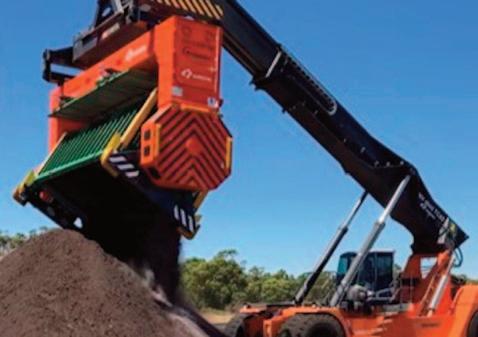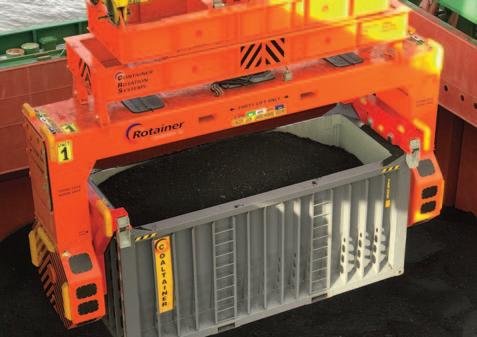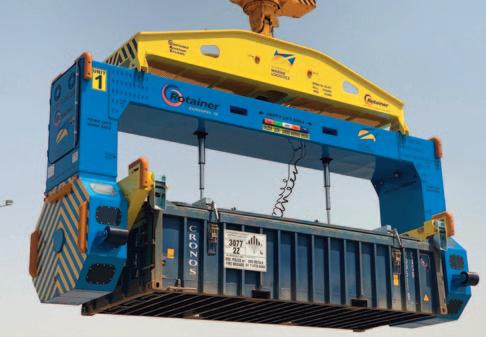
2 minute read
Grain trade restraints visible
During the past twelve months a number of adverse influences affected commodity import demand around the world. Global seaborne dry bulk trade appears to have decreased slightly as a result. Currently signs of a pickup in 2023 are limited.
Among likely restraints on trade expansion in the year ahead, prospects for the world economy are subdued. A revival in China could assist a more positive trend to evolve, but elsewhere prospects are not bright. Inflationary pressures, in particular, and tightening monetary policies accompanying these in many countries, could continue to dampen economic activity for some time. International Monetary Fund economists envisage that a third of the global economy will be in recession during 2023.
GRAIN & SOYA
After a period of strong growth, world trade in grains and soya ceased growing in 2021/22 and looks set to remain flat again in the current 2022/23 trade year ending third quarter 2023. According to US Department of Agriculture estimates published a few weeks ago, trade in wheat, corn and other coarse grains, plus soyabeans and meal could total 664.4mt (million tonnes) in 2022/23, unchanged from the previous year.
While wheat and coarse grains trade is likely to be lower in the current period, soyabeans and meal could increase. One reason for changes in the world market is large variations in China’s purchases. During the past 2021/22 year both grain and soyabeans imports into China declined, reducing the volume by 18mt or 11%, to 142.7mt based on USDA data. But in the current period signs suggest that a recovery in soyabeans buying amid rising consumption could occur.
Coal
Global seaborne coal trade was well supported in the past twelve months, following the 2021 partial recovery from the previous year’s steep downturn. What is likely to happen in 2023? Current tightness in the international energy market, which appears set to continue in the months ahead and perhaps through the entire year points to coal trade being firmly underpinned, possibly resulting in a slight rise.
Several forecasts suggest that growth of up to 2% could be seen this year. Revised predictions by analysts at the Australian Government’s industry department, published in late December, show that world steam and coking coal trade (including land movements, but mostly seaborne) may increase by 25mt or 1.9%. After an estimated 1,347mt in 2022, the total is expected to rise to 1,372mt. Although China’s import volume may decline, other countries are likely to more than compensate.
Iron Ore
The background envisaged for steel industry activity in many countries, over the year ahead, indicates that constraints on demand for many of the products manufactured by steel users may remain subdued. In the construction, machinery, vehicles and household appliances sectors and elsewhere business and consumer spending is likely to be restrained by ongoing macro-economic trends.
In Europe, Japan, South Korea and some other producing countries importing iron ore and coking coal signs of strengthening steel output are still awaited and may not appear in the short term.
For China, the biggest raw materials importer, an economic upturn enabled by the relaxation of coronavirus-control restrictions is widely expected to unfold, accompanied by extra government support measures which could benefit steel production, but residential property sector weakness remains a constraint.
Minor Bulks
Fertilizer movements are an important element of the minor bulks segment. World seaborne trade in potash, phosphate (rock and processed), sulphur and urea evidently was down sharply last year to around 175mt, and may remain weak this year.
Bulk Carrier Fleet
Growth in the Handysize (10–39,999 deadweight tonnes) bulk carrier fleet is estimated at about 3% in 2022. Over the next twelve months a deceleration could occur, despite newbuilding deliveries probably remaining steady, if scrapping of old or uneconomic tonnage revives.




Since the initial rebound in global seaborne dry bulk trade emerged after a downturn accompanying the coronavirus pandemic, the trend has weakened. Provisional data suggests that a reduction occurred in the past twelve months, and prospects for the year ahead point to only a minor improvement.
Events during 2022, which greatly constrained import demand for many commodities in countries around the










